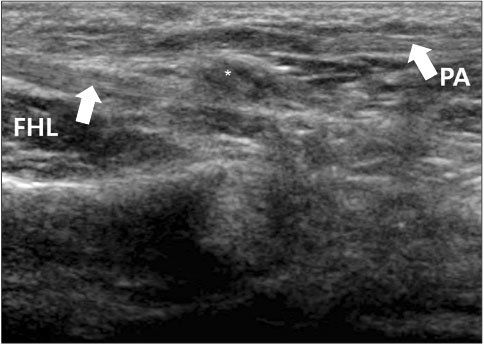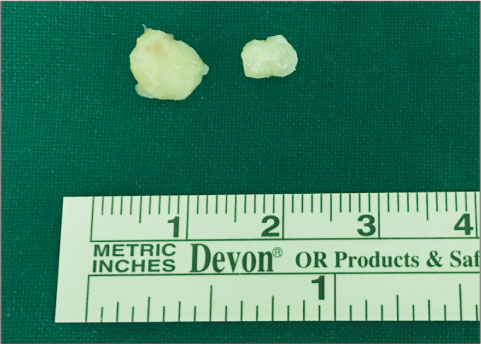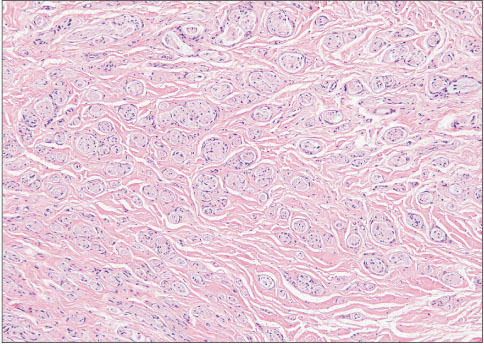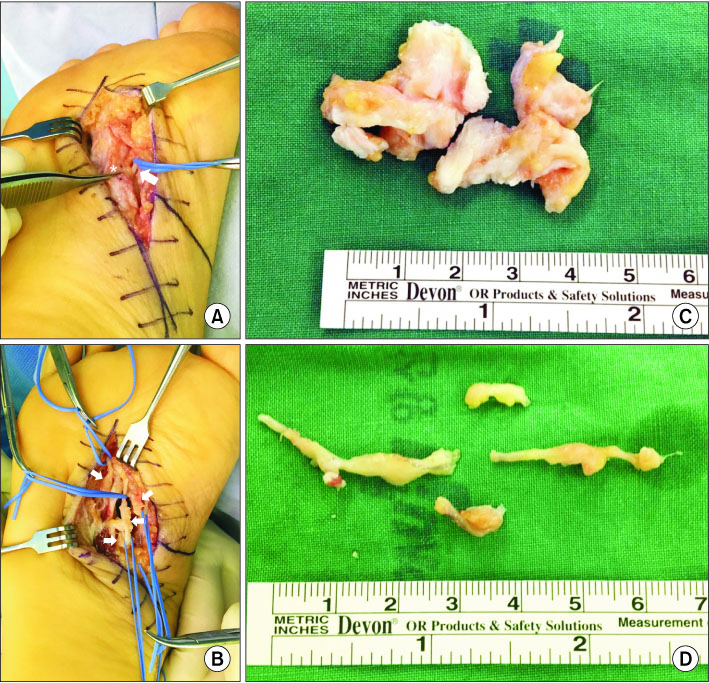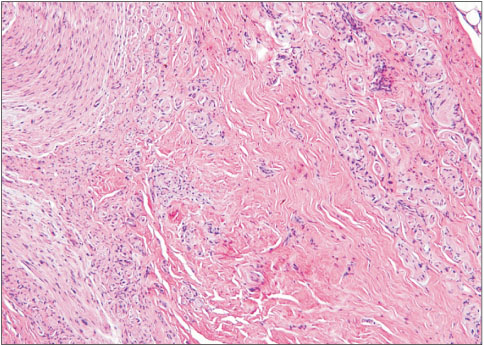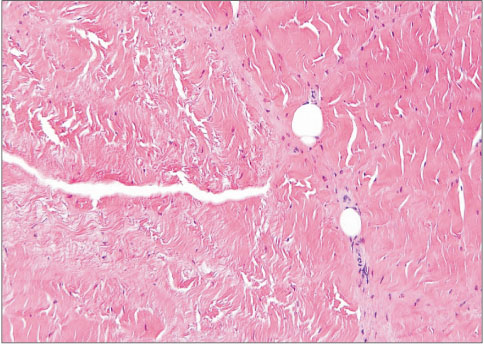J Korean Foot Ankle Soc.
2017 Dec;21(4):174-178. 10.14193/jkfas.2017.21.4.174.
Unusual Presentation of Traumatic Neuroma of the Medial Plantar Nerve after Deep Laceration Mimicking a Foreign Body Granuloma: A Case Report
- Affiliations
-
- 1Department of Orthopedic Surgery, Pusan National University Yangsan Hospital, Pusan National University School of Medicine, Yangsan, Korea. nari1006@gmail.com
- KMID: 2398017
- DOI: http://doi.org/10.14193/jkfas.2017.21.4.174
Abstract
- Traumatic neuromas are rare benign tumors that are common after trauma or surgery and are usually accompanied by obvious symptoms of pain. Most reports show neuromas in the face, neck, and limbs, and the traumatic neuroma of the medial plantar nerve has rarely been reported. We encountered a traumatic neuroma of the medial plantar nerve after a deep laceration mimicking a foreign body granuloma. A small mass lesion was found around plantar aponeurosis with heterogeneous high signal intensity in the T2 fat suppression view and slightly enhanced intensity in the magnetic resonance imaging that suggested a foreign body granuloma. The lesion was diagnosed pathologically as a traumatic neuroma. A satisfactory clinical result was obtained after excision of the traumatic neuroma and burial of the proximal and distal stumps to the adjacent muscle at the secondary operation.
Keyword
MeSH Terms
Figure
Reference
-
1. Brogan DM, Kakar S. Management of neuromas of the upper extremity. Hand Clin. 2013; 29:409–420.
Article2. Roh YT, Park IJ. Treatment of the traumatic neuroma. J Korean Soc Surg Hand. 2014; 19:209–220.
Article3. Kim J, Dellon AL. Reconstruction of a painful post-traumatic medial plantar neuroma with a bioabsorbable nerve conduit: a case report. J Foot Ankle Surg. 2001; 40:318–323.
Article4. Lundborg G. A 25-year perspective of peripheral nerve surgery: evolving neuroscientific concepts and clinical significance. J Hand Surg Am. 2000; 25:391–414.
Article5. Watson J, Gonzalez M, Romero A, Kerns J. Neuromas of the hand and upper extremity. J Hand Surg Am. 2010; 35:499–510.
Article6. Kang J, Yang P, Zang Q, He X. Traumatic neuroma of the superficial peroneal nerve in a patient: a case report and review of the literature. World J Surg Oncol. 2016; 14:242.
Article7. Wall PD, Gutnick M. Ongoing activity in peripheral nerves: the physiology and pharmacology of impulses originating from a neuroma. Exp Neurol. 1974; 43:580–593.
Article8. Guse DM, Moran SL. Outcomes of the surgical treatment of peripheral neuromas of the hand and forearm: a 25-year comparative outcome study. Ann Plast Surg. 2013; 71:654–658.
Article
- Full Text Links
- Actions
-
Cited
- CITED
-
- Close
- Share
- Similar articles
-
- Superficial course of the medial plantar nerve: case report
- A Case of Foreign Body Granuloma after Squalene Injection by Non-dermatologists
- An Intradiscal Granuloma Due to a Retained Wooden Foreign Body
- A Case of Traumatic Epidermal Cyst Containing Glass Pieces
- A Traumatic Neuroma in Breast Cancer Patient after Mastectomy: A Case Report


